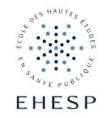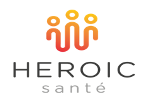For this International Health Marketing Day, we encourage work from a variety of perspectives: empirical or conceptual, organizational or individual, qualitative or quantitative, from academics, doctoral students, and practitioners. International contributions are welcome. All submissions should clearly focus on health marketing issues (as broadly defined in the introduction).
Papers in this area may include, but are not limited to, topics in the following areas, for example:
Axe 1: Social marketing
In the context of the pandemic, social marketing offers different perspectives on its principles, strategies or best practices that have been - or could have been - applied to reduce the spread of Covid-19. This axis focuses on the field of prevention by concentrating, for example, on the study of specific segments (vulnerable people, health professionals, positive testers, etc.); of the behaviors influenced (barrier gestures, social distancing, quarantine, vaccination, etc.); of the benefits of and obstacles to preventive behaviors; or of the marketing tools mobilized, etc. (Lee, 2020)
Axe 2 : Hospital and medico-social marketing
Le marketing hospitalier et médico-social mobilise le marketing stratégique et opérationnel pour améliorer la prise en charge, les soins ou encore le bien-être du patient en s'engageant auprès du public ou en présentant, par exemple, des connaissances médicales. Tout en apportant son expertise organisationnelle et médicale, l’hôpital fait face à l’arrivée de nombreux patients atteints par la Covid-19 l’obligeant sans cesse à s’adapter. Cet axe s’intéresse alors au domaine hospitalier et médico-social en se concentrant par exemple sur l’étude de l’augmentation de la charge de travail et du stress psychologique du personnel médical; de la prise en charge du patient Covid-19; des retards dans les traitements par un report des visites hospitalières chez les patients ; de la communication vers le grand public etc…
Axe 3 : Le marketing pharmaceutique et des fournisseurs
The pharmaceutical industry is continuously adapting under the effect of scientific progress, research, financial constraints, etc., in order to satisfy the demand for wellness and to offer advances that change the lives of patients and citizens of the world. In the context of the pandemic, the industry has brought a perspective to the fight against Covid-19 by developing vaccines and certain treatments. This axis is then interested in the marketing of the vaccination, the prescription of the vaccination, the citizen prescribing his vaccination, the communication B to B to D to C or the new stakeholders and actors born of this pandemic etc. ...
Axe 4 : Public Health
For several decades, the scientific community has been warning states about the dangers of emerging infections and the specter of a possible global pandemic (Lederberg, 2003). Despite the warnings, the emergence of the coronavirus and its rapid spread throughout the world will cause a public health crisis. In the early stages of the crisis, the public health community found itself having to mobilize only non-pharmaceutical interventions to curb the spread of the virus. Today, the focus is on addressing vaccine hesitancy and refraction. This axis focuses on the study of public health measures to reduce the transmission of Covid-19 such as bans on public gatherings, lockdowns, mandatory school closures, closure of non-essential businesses, implementation of telecommuting, masking, quarantine, cluster management, speaking out, vaccine pass, for example.
Axe 5 : Healthcare providers
Family doctors, pharmacies, and private practice nurses, midwives, dentists, and veterinarians are at the heart of the COVID-19 effort. Telemedicine has become a key innovation opportunity with non-emergency visit management and viral "triage" appointments. Pharmacies are stepping up their role as a community health player by being entrusted with the management of antigenic testing and vaccination. Doctors, nurses and pharmacists are taking up the challenges of motivation and access to vaccination during the pandemic. This axis is therefore interested in the study of the role, the organization and the mobilization of local health professionals.
|
 Aims of the 7th International Health Marketing Day
Aims of the 7th International Health Marketing Day Five thematic Axes
Five thematic Axes Two forms of communication are expected
Two forms of communication are expected Three presentation types
Three presentation types Publication for academic papers
Publication for academic papers PDF: Call for papers HMID - VII
PDF: Call for papers HMID - VII





 Our partners
Our partners













